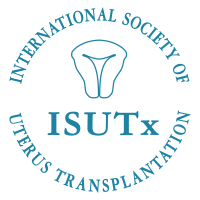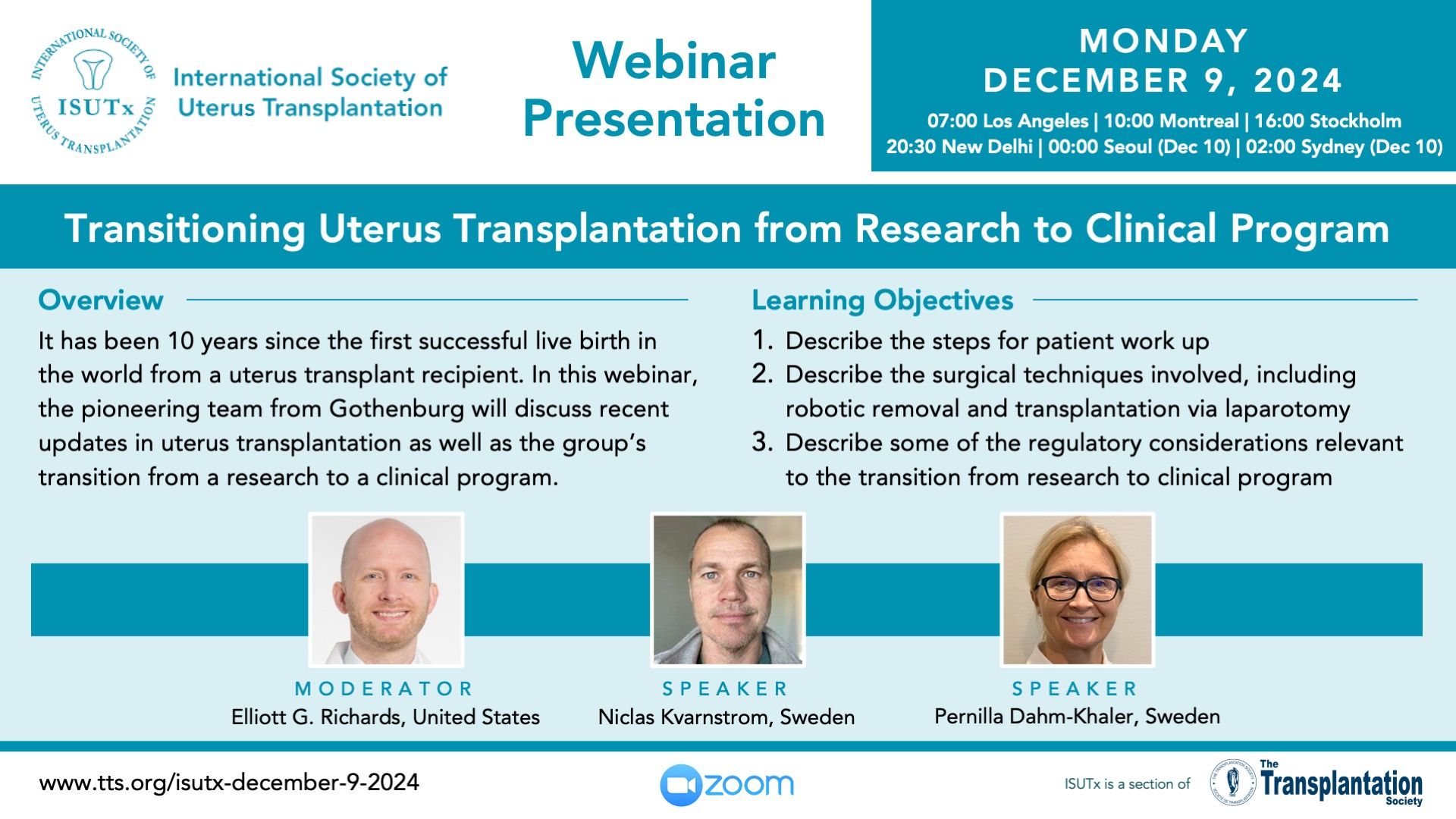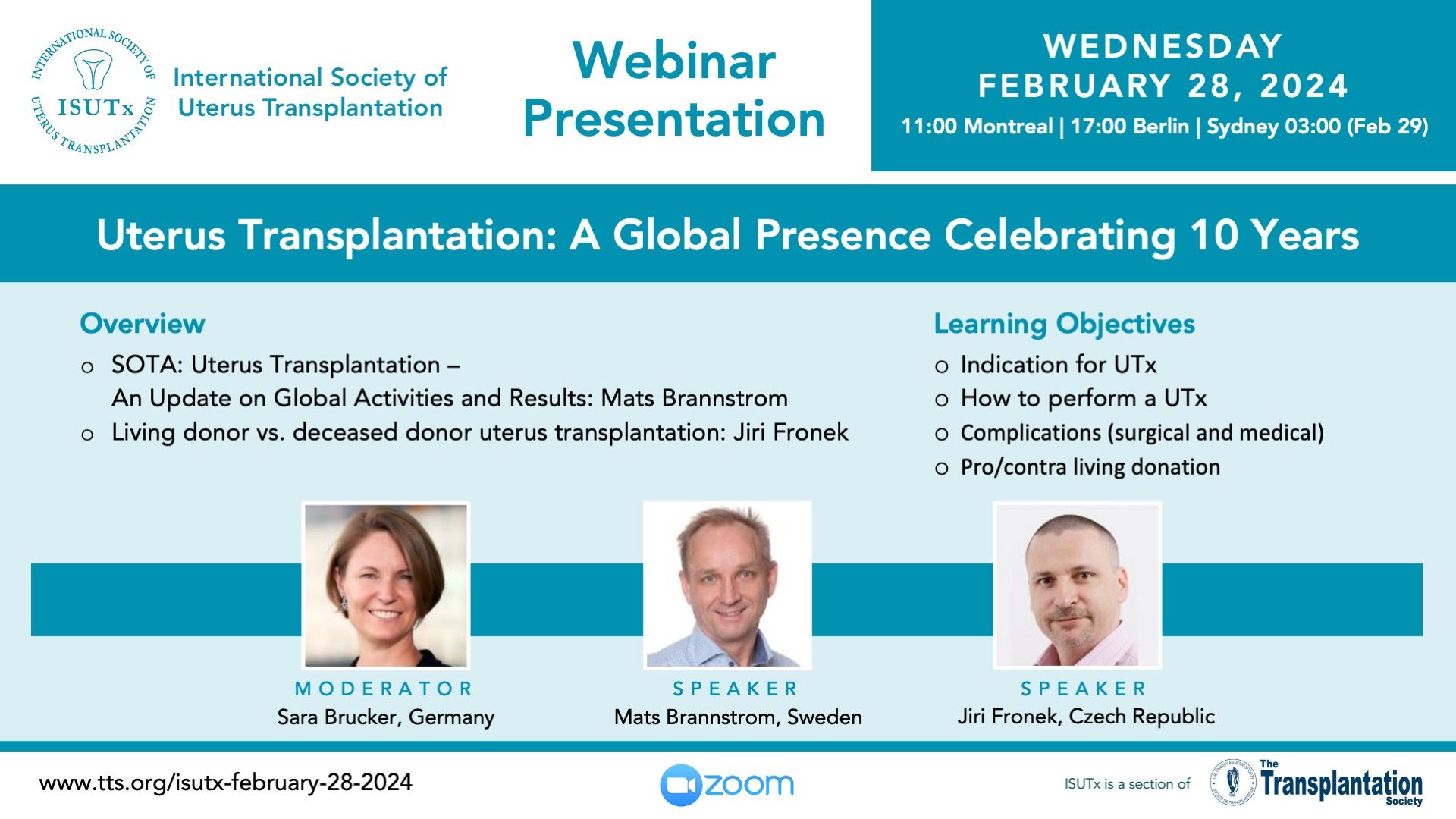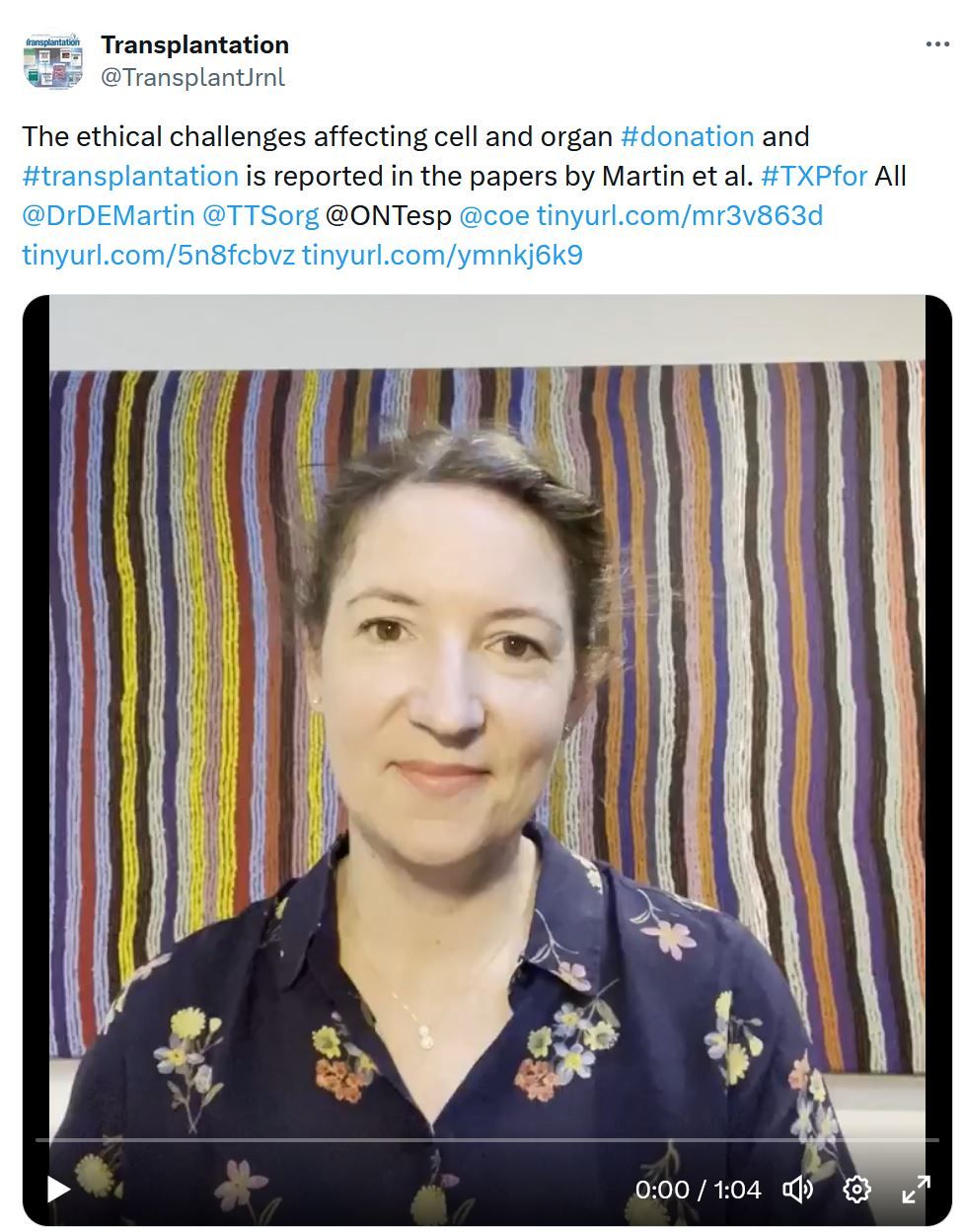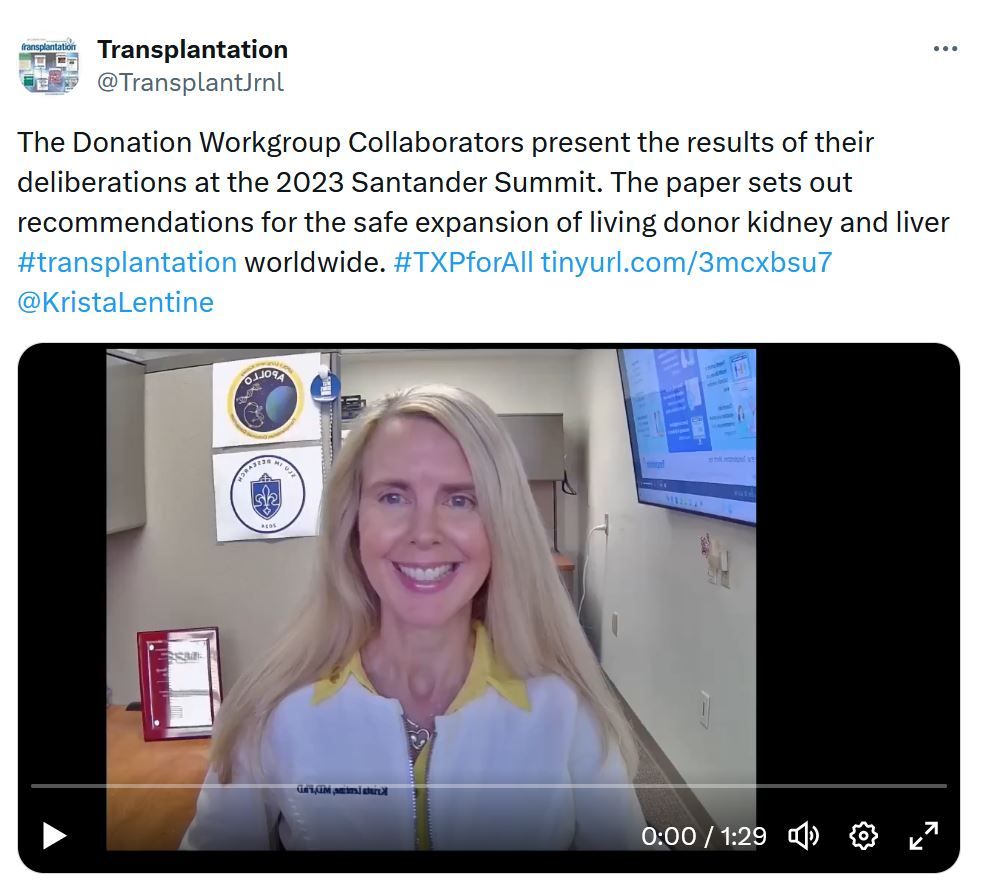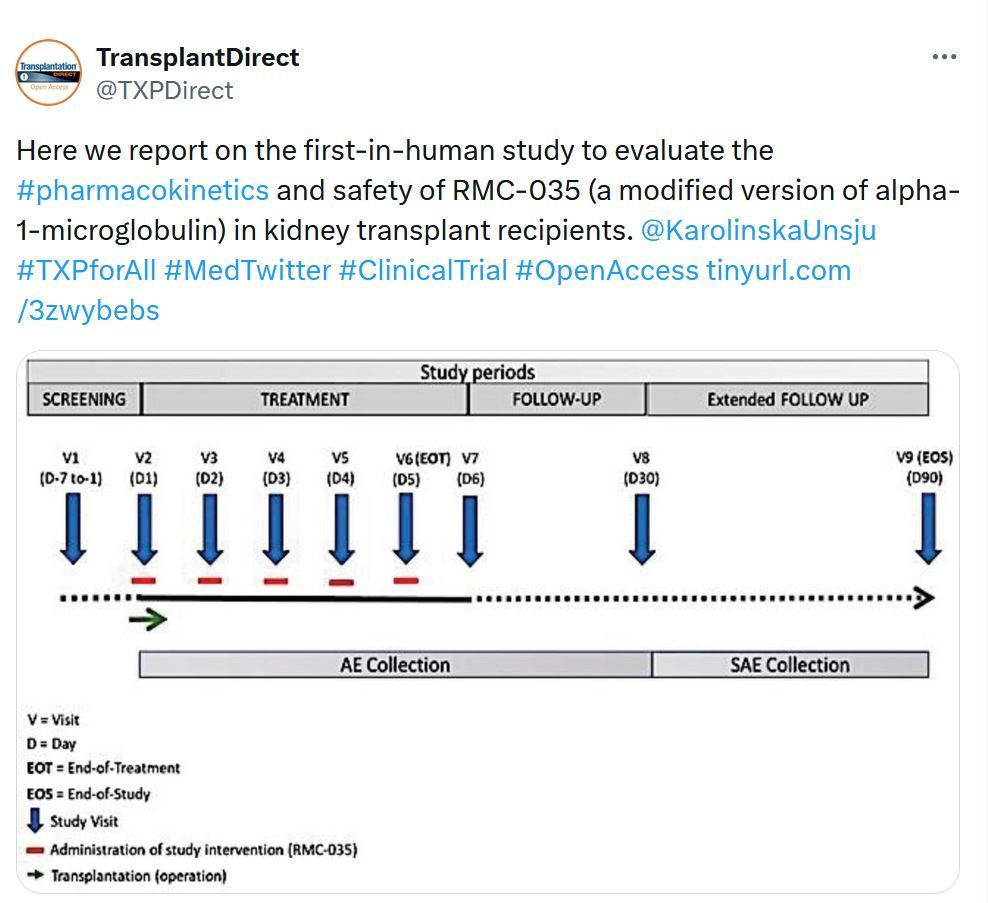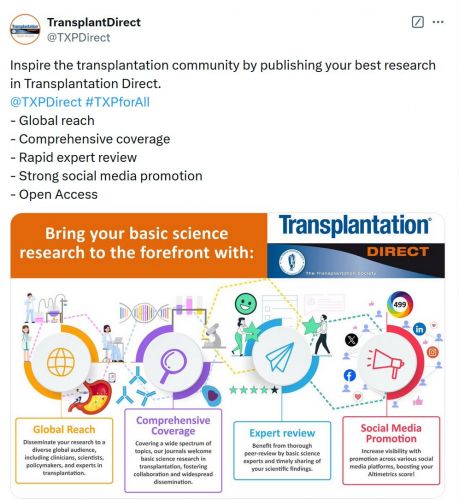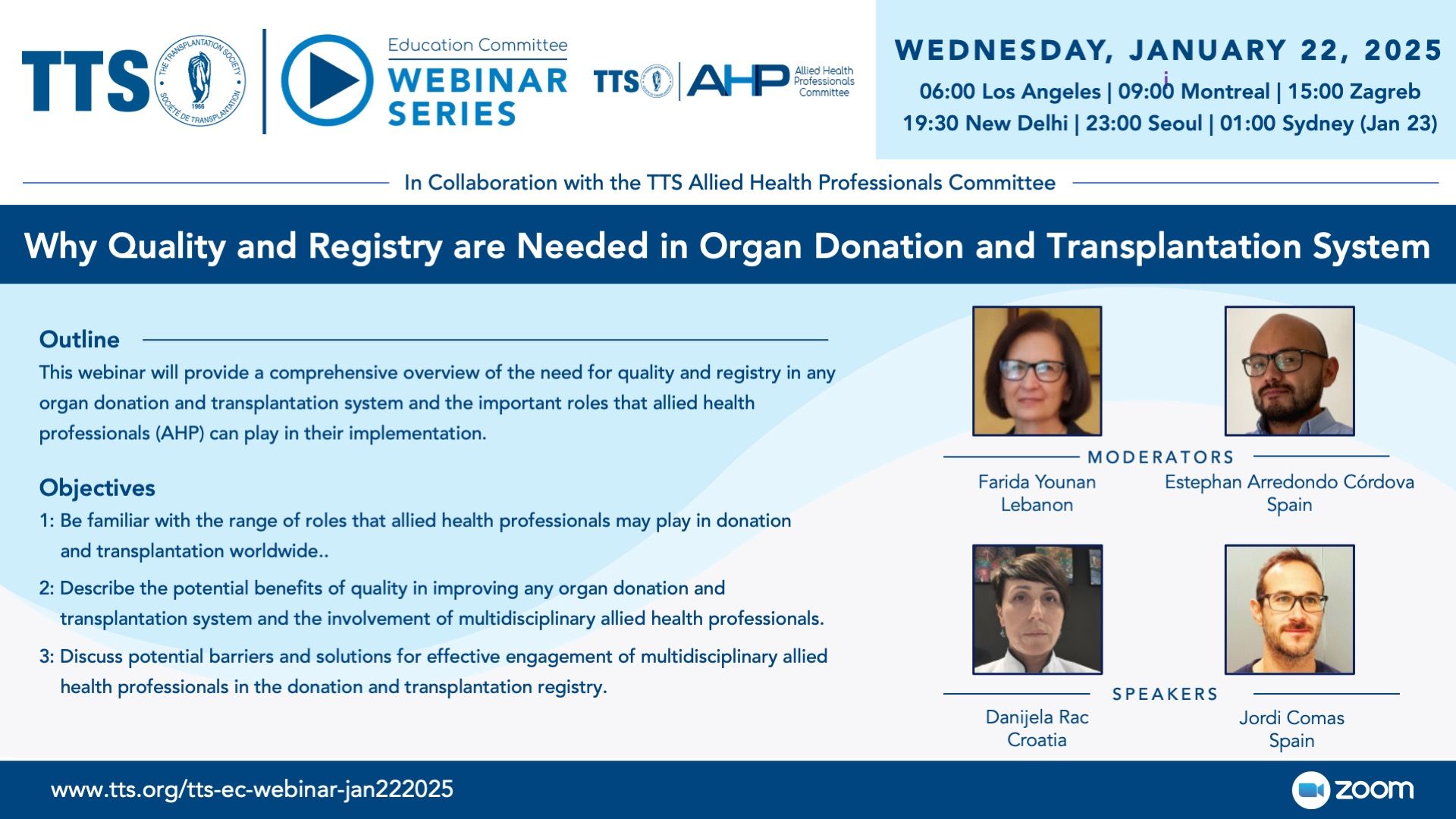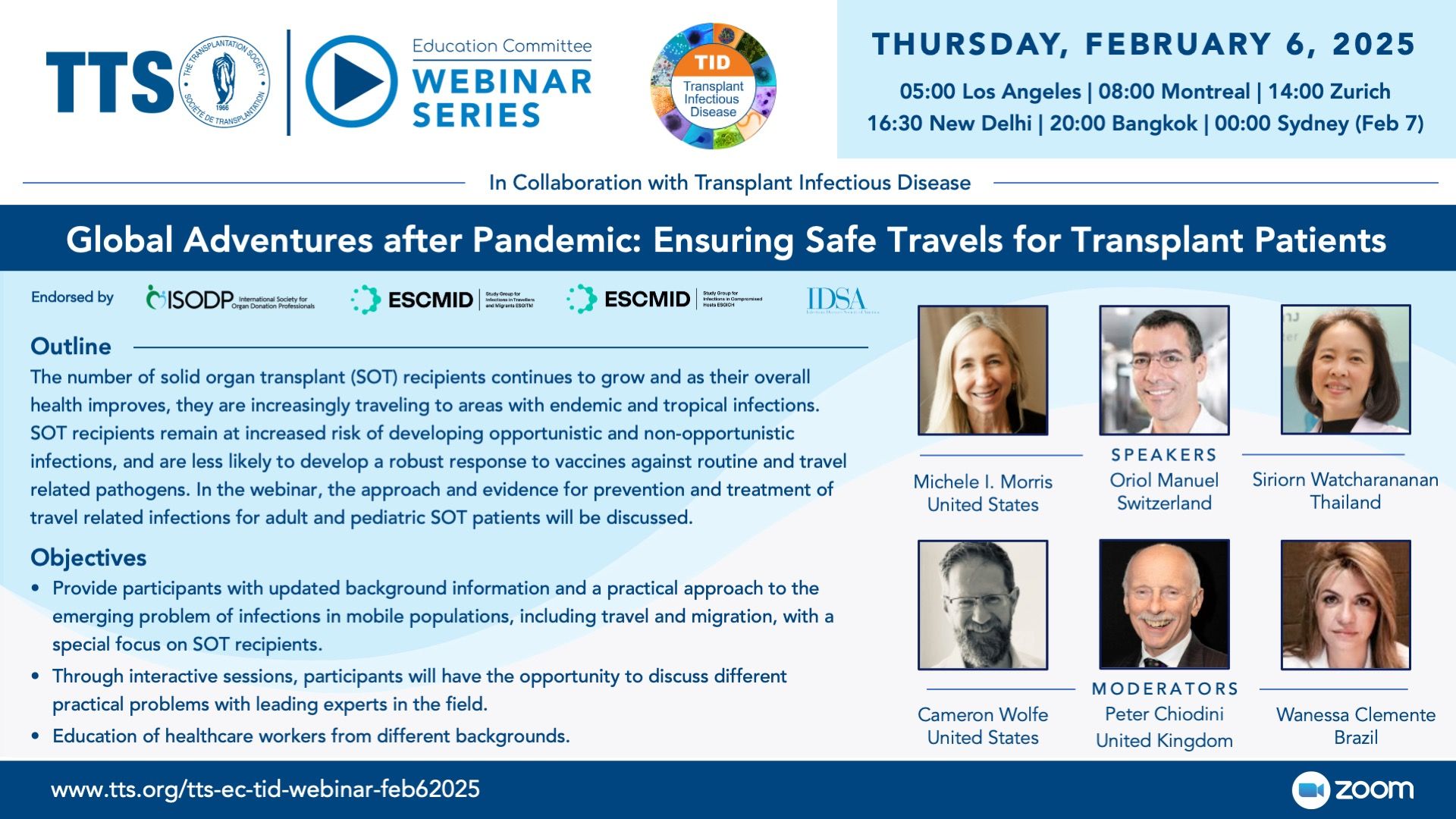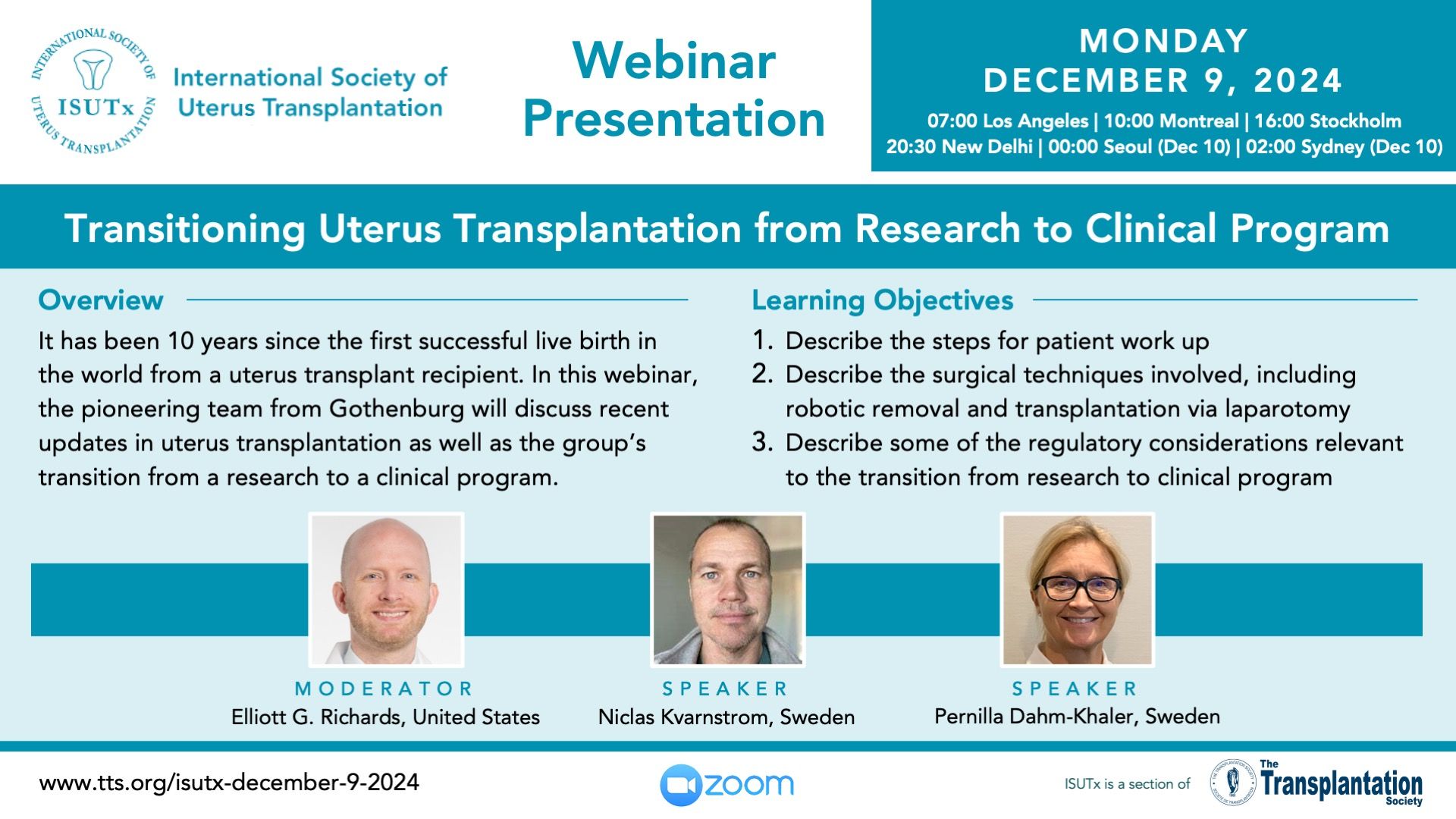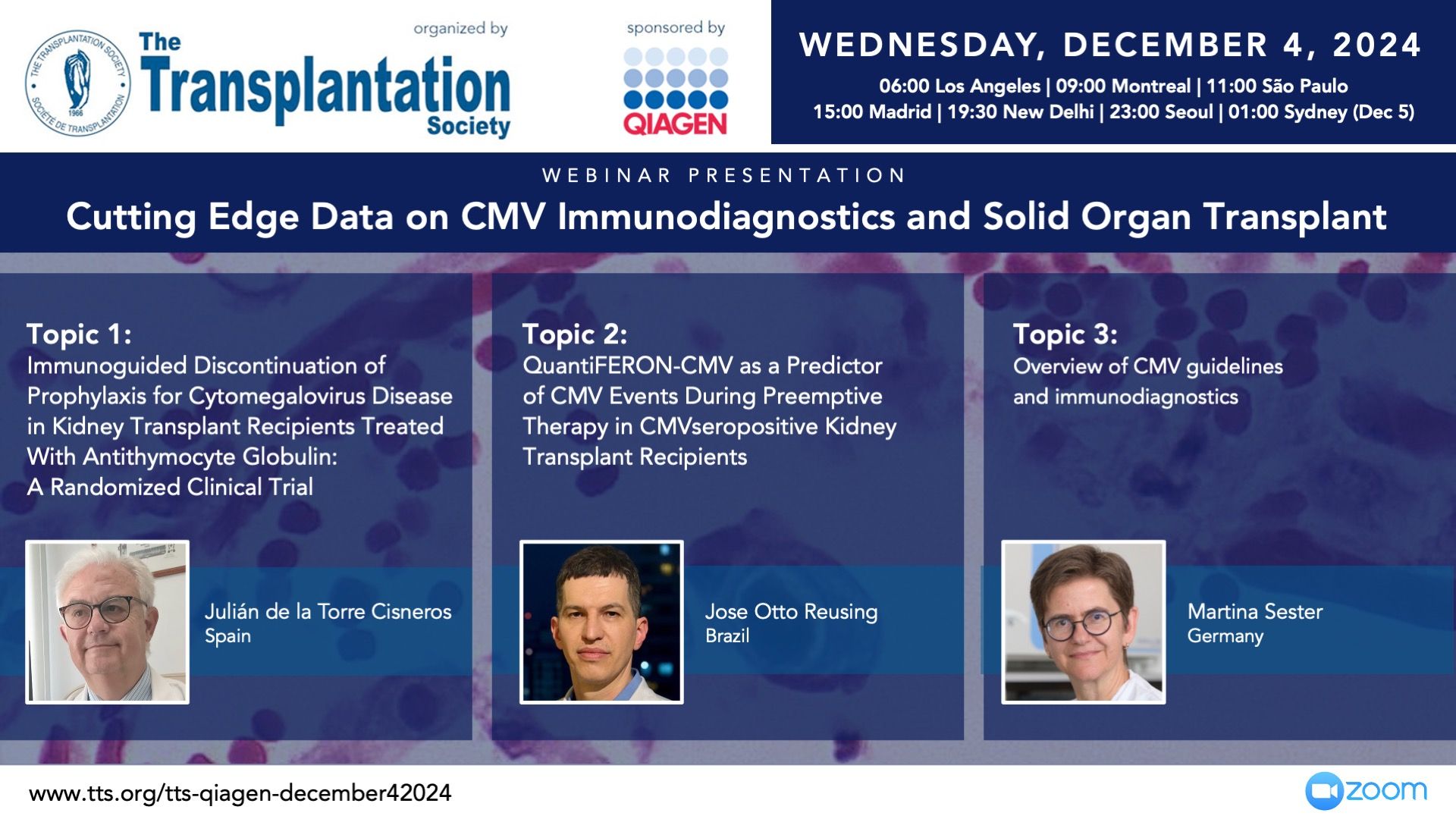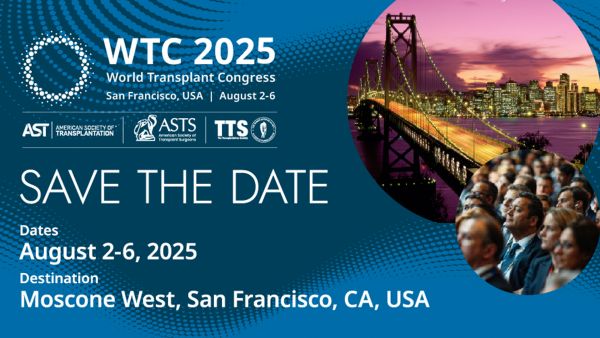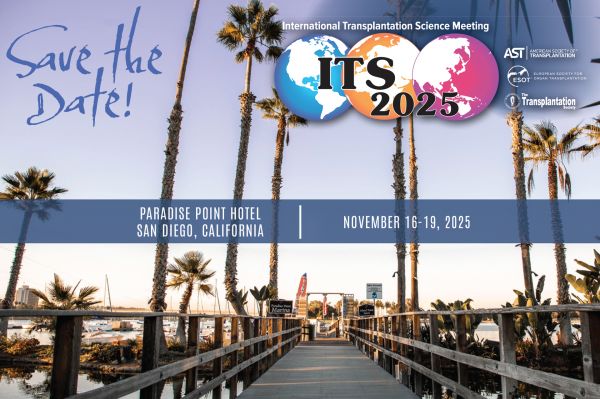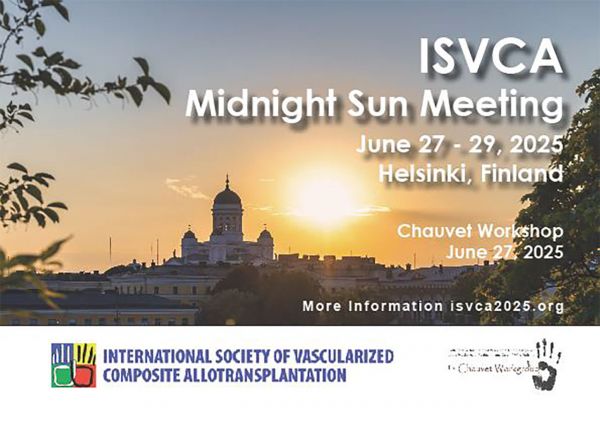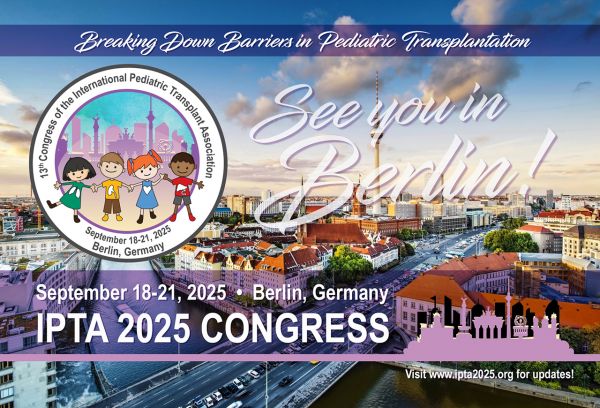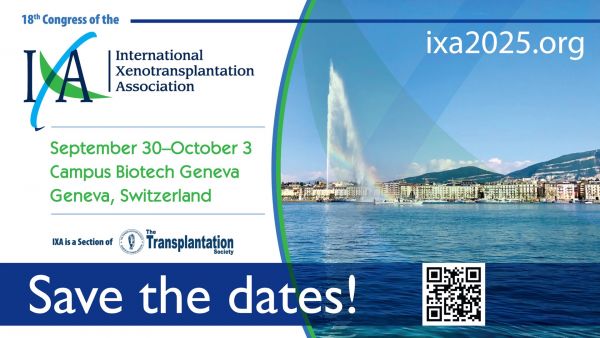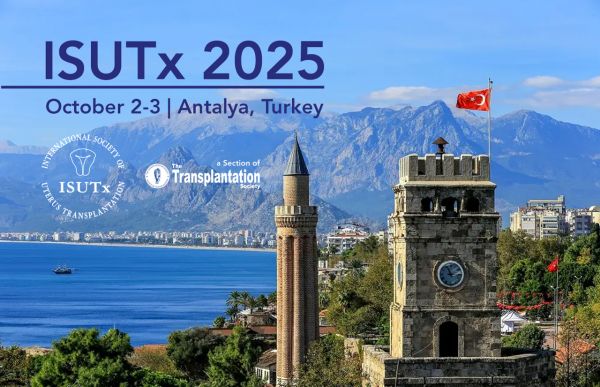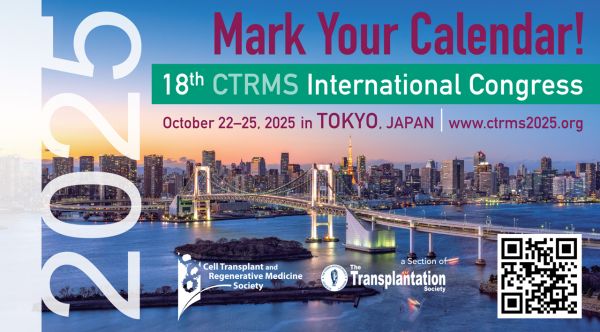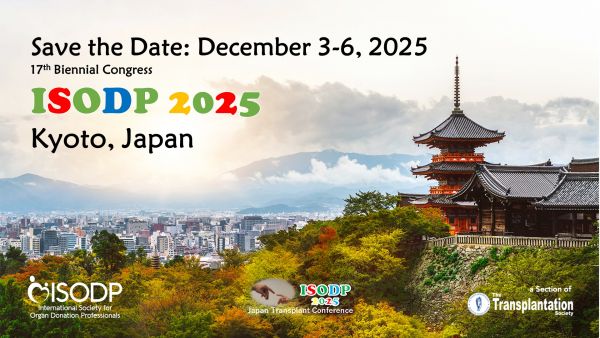
Season's Greetings from The Transplantation Society!
On behalf of the Council of The Transplantation Society, we wish you a joyful holiday season filled with warmth, happiness, and cherished moments.
Thank you for being part of our community. Here's to a wonderful new year ahead, full of opportunities and success.
Happy Holidays!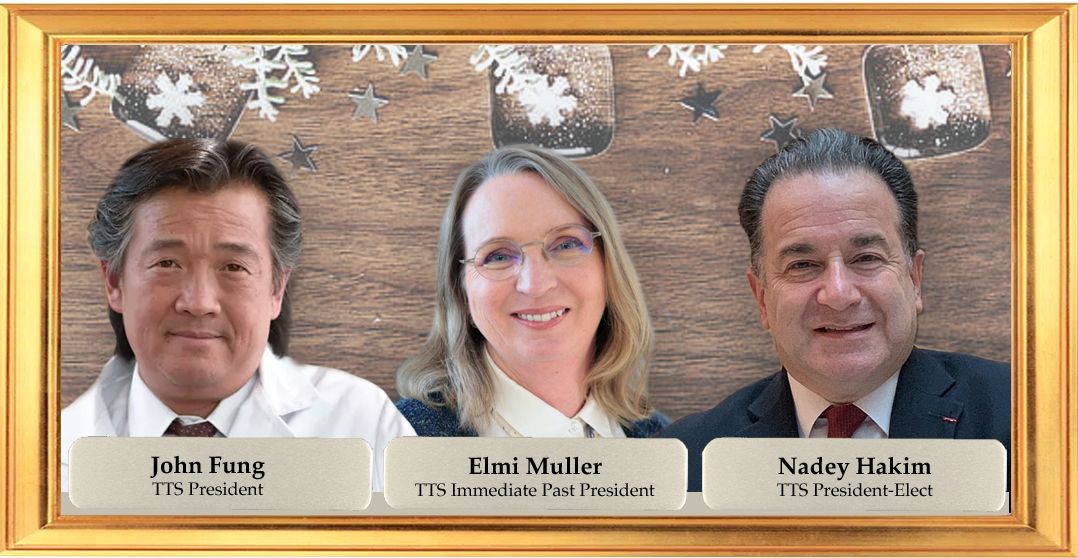
WHO - Call for Experts
Expert Advisory Panel/Committee on Donation and Transplantation of cells, tissues and organs (ECDT)

Special ISUTx Feature

Celebrating this event ten years later, the International Society of Uterus Transplantation (ISUTx) hosted its 4th State-of-the-Art Meeting in Gothenburg to commemorate this transformative decade. The two-day conference opened with a heartwarming moment: Vincent, the first child born from a uterus transplant, now 10 years old, addressed the audience. In fluent English, Vincent introduced himself as “an ordinary boy who loves sports, especially golf and ice hockey.” He shared how proud his parents were of him and encouraged the audience to continue their work to make UTx accessible worldwide. He concluded with heartfelt wishes for a successful meeting. The delegates were deeply moved by Vincent’s speech, with many shedding tears of joy as they reflected on how far the field has come in just a decade. The event highlighted the profound human impact of this medical breakthrough.
Since its inception, ISUTx has organized annual scientific meetings, alternating between comprehensive congresses and focused state-of-the-art gatherings. The 2024 anniversary meeting attracted over 100 delegates from more than 20 countries, addressing key advancements and pressing topics within the field of UTx.
Evolving inclusion criteria for both recipients and donors, which vary across centers have been discussed at length. Psychological stability in both recipients and living donors emerged as a critical consideration in the selection process. Additionally, the recommended maximum age for donors has been adjusted to around 50-55 years. The evaluation of the donor uterus’s vascular anatomy was also highlighted as a vital preoperative step.
Historically, the surgical success of UTx—measured by adequate postoperative blood flow and the onset of menstruation—has been inferior for procedures involving deceased donors compared to those with living donors. However, recent developments indicate that the success rate for deceased donor UTx has significantly improved. Current estimates suggest that approximately 85% of uterus transplant procedures performed today will ultimately result in the birth of one or two children. These data highlight the high take-home-baby rate for this innovative yet complex procedure, which combines in vitro fertilization with a complex surgical procedure, making UTx a more effective treatment for infertility compared to treatments for many other infertility causes.
One significant challenge with live donor UTx has been the relatively high complication rate among donors. The most severe complications have predominantly involved ureteric injuries, leading to urinary obstructions or fistulas. To address these issues, three presentations focused on strategies to reduce complications and improve the efficiency of living donor surgeries. These discussions also explored the role of robotic-assisted surgical techniques in streamlining the procedure and minimizing risks.
It was clear that many centers [with successful UTx programs] performing living donor UTx had begun utilizing robotic-assisted donor hysterectomies as a minimally invasive surgical approach. This technique offers advantages such as shorter hospital stays and reduced recovery times for donors.
The Gothenburg group presented data on the long-term psychosocial well-being of both recipients and living donors. Their findings suggest that, over a period of up to five years post-surgery, both groups generally exhibit stable psychosocial parameters, though psychosocial strains were noted in cases with unsuccessful outcomes. During the meeting, two recipients and two living donors shared their personal experiences with the procedure. One recipient, who had a congenital absent uterus, underwent a surgically successful deceased donor UTx but had to have the uterus removed months later due to complications linked to a severe post-transplant lymphoproliferative disorder. Despite the complications, she shared with the audience that she probably would have made the choice of UTx even with knowledge about this risk; she is currently exploring alternative paths to parenthood and has established a patient support group. The donors, including a mother and a distant relative, reflected positively on their decision to donate. However, they also acknowledged that they had not fully anticipated the psychological strain their extended day of surgery placed on their loved ones.
The second day of the meeting focused on reviewing and discussing the current uterine rejection grading system, which is based on histology of cervical biopsies. Discussions explored potential advancements to shift toward less invasive methods for diagnosing rejection, such as analyzing vaginal fluid and blood samples. One presentation examined kidney function outcomes under two different immunosuppressive protocols. With an adjustment of the induction treatment to the IL-2R antibody and adjusted tacrolimus levels combined with azathioprine for maintenance demonstrated kidney functions had not been impacted, unlike the older protocol, which included anti-thymocyte globulin induction and a higher-dose tacrolimus monotherapy, leading to compromised kidney functions in around half of the UTx-patients.
A presentation was also given on the first systematic review of obstetrical outcomes following UTx, based on data from 40 live births. The pregnancies mirrored those seen in women who have undergone solid-organ transplantation, with an elevated incidence of hypertension/preeclampsia, gestational diabetes, placenta previa, and preterm delivery. Despite these challenges, all children were reported to be healthy. It was emphasized that pregnancies after UTx should be managed as high-risk. Additionally, the establishment of a UTx-specific pregnancy and child registry was identified as a critical need to enable long-term follow-up and to gather comprehensive data for developing future guidelines.
Presentations also addressed the ethics and financial issues associated with UTx. One discussion focused on how to evaluate the value of UTx in a cost-effectiveness analysis. The debate centered on whether only the value to the parents, which is the conventional approach, should be included or if the value of the child(ren) being born should also be considered. Since the primary goal of UTx is to enable individuals to have a child, it was argued that the value of the child(ren), along with the value of parental autonomy in achieving conception, should be factored into the analysis. The Swedish team shared an analysis of the total costs per live birth from their initial UTx study. These calculations included all stages of the process, including pre-transplant evaluations, the transplantation procedure, pregnancy, delivery and hysterectomy, adding up to €120,000. Moving forward, it is expected that the time interval between surgery and pregnancy will get shorter with the potential to have up to three children from a single transplanted uterus becoming feasible, thus potentially leading to an overall reduction of costs per live birth.
The meeting concluded with a discussion among representatives from 10 centers with successful UTx programs, under the theme “UTx Moving Forward: Identifying Barriers and Solutions.” It was clear that many centers performing living donor UTx had begun utilizing robotic-assisted donor hysterectomies as a minimally invasive surgical approach. This technique offers advantages such as shorter hospital stays and reduced recovery times for donors. The discussion also highlighted the varying methods of UTx funding across countries, including out-of-pocket payments in the United States and India and integration within national health insurance systems, as seen in Germany.
Following the congress, a post-congress course on robotic UTx procedures was conducted. The Swedish team presented their extensive experience with robotic techniques in donor hysterectomy, transplantation, and transplant hysterectomies through detailed video footage and in-depth discussions.
In recognizing the progress of UTx over the last 10 years celebrated in Gothenburg, ethical components have evolved, requiring a detailed debate. Addressing the challenges of a rapidly advancing field, the ethics committee of the ISUTx produced a detailed manuscript (Guardrails for uterus transplantation. Wall A et al. Transplantation: in press) with an outline of guardrails for the field moving forward.
Overall, the 10th anniversary celebration of UTx and its accompanying congress proved to be a highly productive gathering, with active groups sharing invaluable insights. Looking ahead, ISUTx is preparing for the 5th Biannual ISUTx Congress, which will take place in Antalya, Turkey, on October 2–3, 2025.
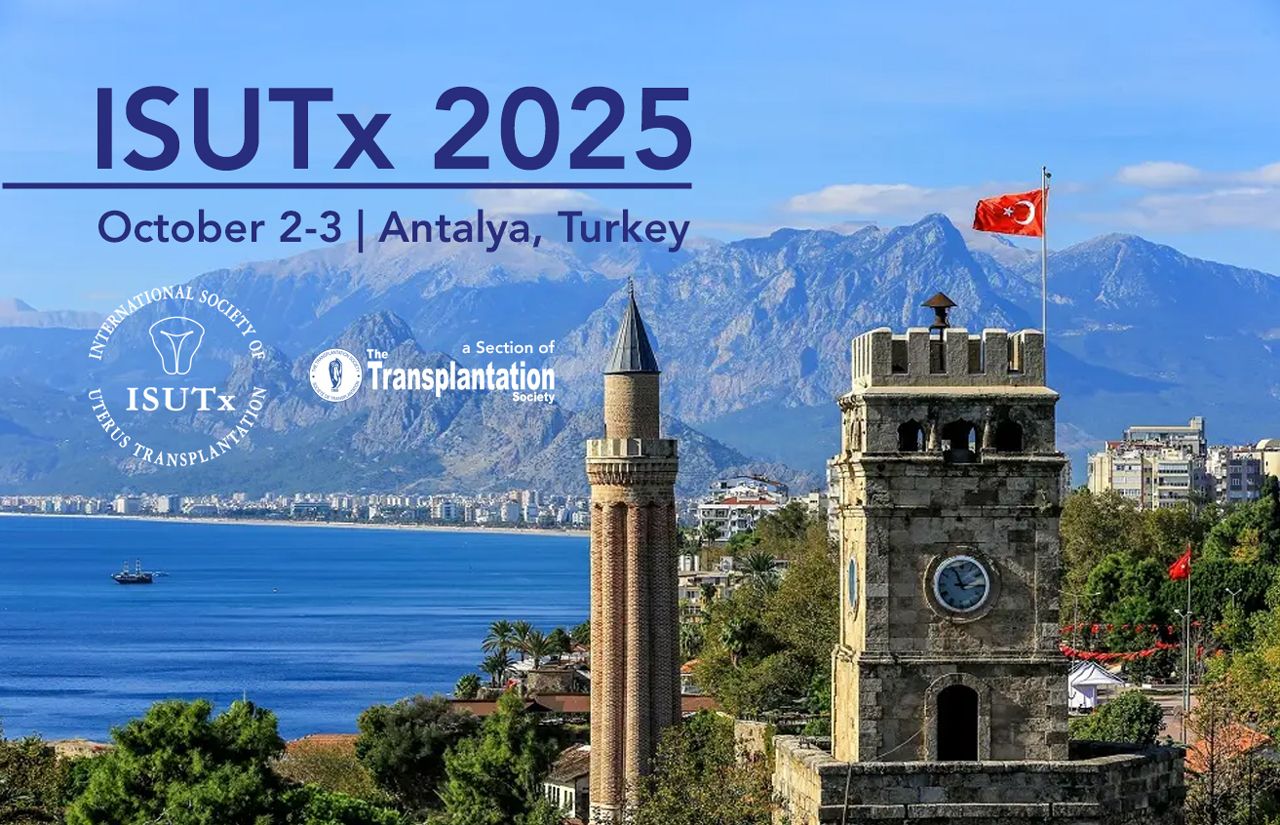
See Our Uterus Transplantation Related Sessions from TTS 2024
Abstract Submission for WTC 2025

February 19, 2025.
Membership Renewals
Transplantation Journal Highlights
Transplantation - Santander Papers Spotlight
Transplantation Direct - Social Media Content
In Case You Missed It...
Contact
Address
The Transplantation Society
International Headquarters
740 Notre-Dame Ouest
Suite 1245
Montréal, QC, H3C 3X6
Canada
Используйте Вавада казино для игры с бонусом — активируйте промокод и начните выигрывать уже сегодня!

